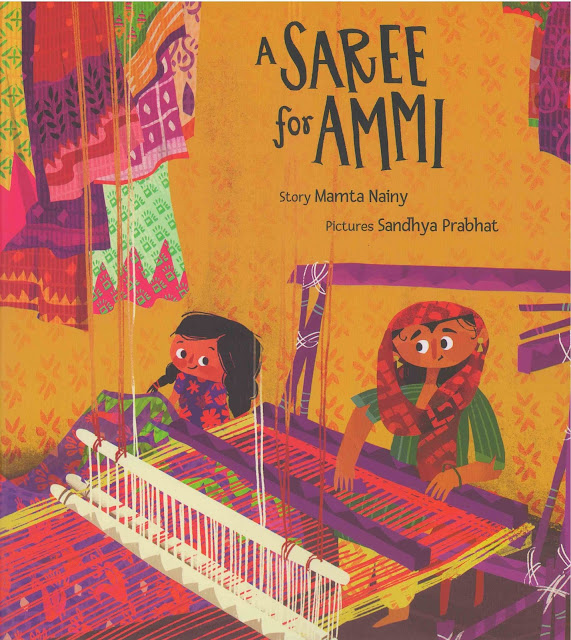A Saree for Ammi
A Saree for Ammi
Story: Mamta Nainy
Pictures: Sandhya
Prabhat
Tulika Publishers
2019
As a society we have a dislike, a disdain, for questions. More
so for difficult questions, questions which make us uncomfortable. Not only do
we refrain from asking such questions but we also look down upon those asking
them. Beginning with homes, moving on to schools and further on this continues
during our lives.
A Saree for Ammi raises the issue
of the economic divide. A daughter of weaver parents’ wonders “Ammi makes so many
sarees, but she doesn’t wear any of them”. For a book that primarily caters to children (5+ says
the cover) this is welcome indeed. We perhaps are beginning to treat
children as individuals. Children, who possibly are better equipped to deal
with the situation!
Not just for children. Many a time, books such as these
enable adults to think with their hearts in a manner than data driven
voluminous reports do not. Some of us associate weaving with places (Banaras
or Maheshwar), some with art (albeit a dying one), some with
expensive clothes (or select brands), and else, but how many of us have
wondered on this aspect? Is this very different from that of (most) taxi drivers who drop people to airport not being able to afford flying in airplanes?
Questions such as the one raised by the book are pertinent
as we increasingly move towards higher income inequality and are less and less
aware of worlds other than the one we inhabit. Lack of awareness is more often
than not a precursor to absence of empathy. Empathy towards those who are not
like us. We adults, many a time, pretend as if some people (who are not part
of our world) do not exist, and the children take cue. This is not exactly
an ingredient for a healthy society!
This is a book that can be a platform to discuss difficult
yet crucial issues with children as also with adults. How do we treat our
artisans? Or how weaving is a family occupation? Talking about weaving I wonder
how children from weaving families would look at this book! In Banaras, for
example, a sizeable chunk of weavers is averse to their children continuing
their profession. Not a surprise given that many of them have had to become
daily wager labourers at construction sites.
In the story a young girl admires the sarees her mother
weaves. She wonders why her mother does not wear them. She then teams up with
her sister to get a saree for her mother. A saree their mother had woven. A
saree they want to see her dressed in. The young and enterprising girls are
judged, advised, preached to by none as we flip pages. The text and the
illustrations gel together. The eyes, especially, are eye-catching!
The last line makes it a perfect ending, if there is one, “when Sadaf and I
give that saree to Ammi, what will she say, we wonder . . .”


Comments
Post a Comment